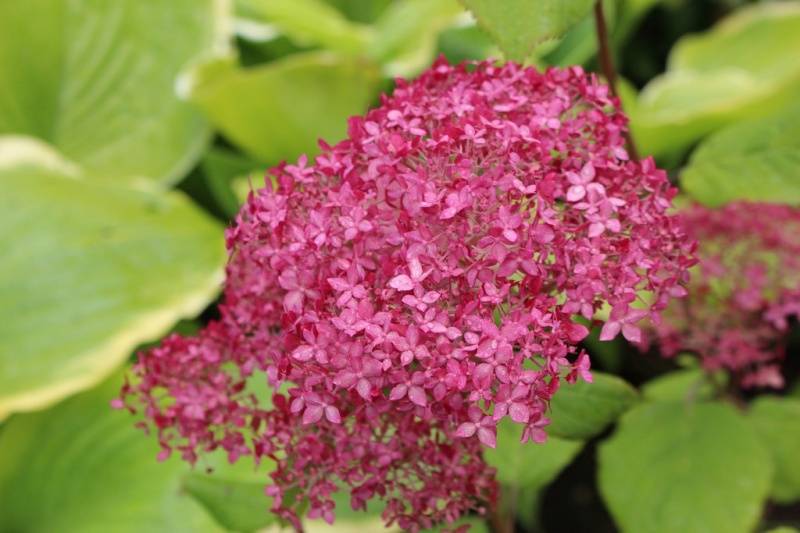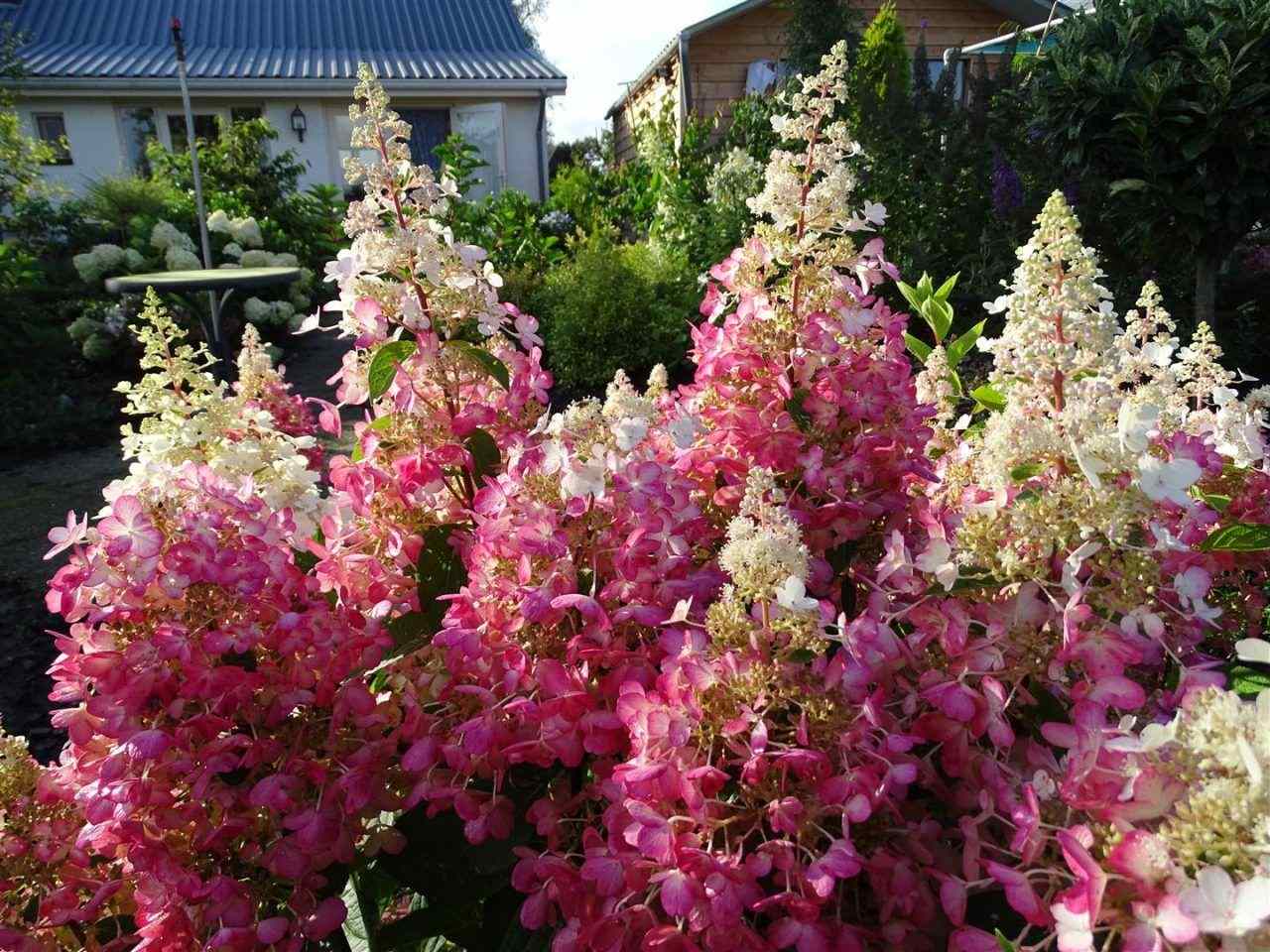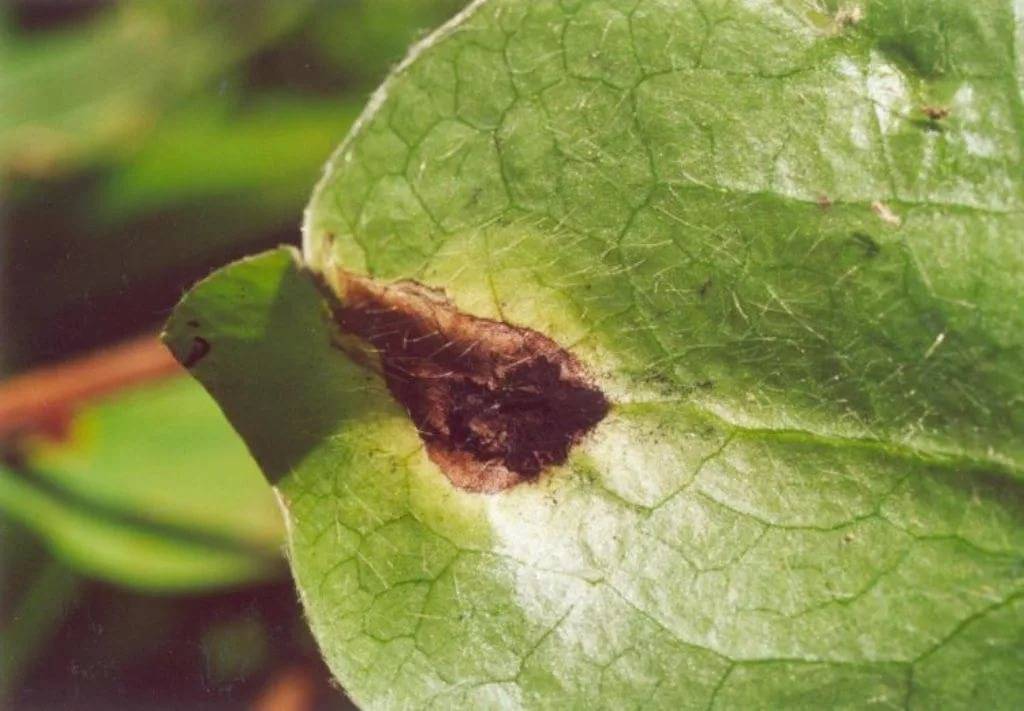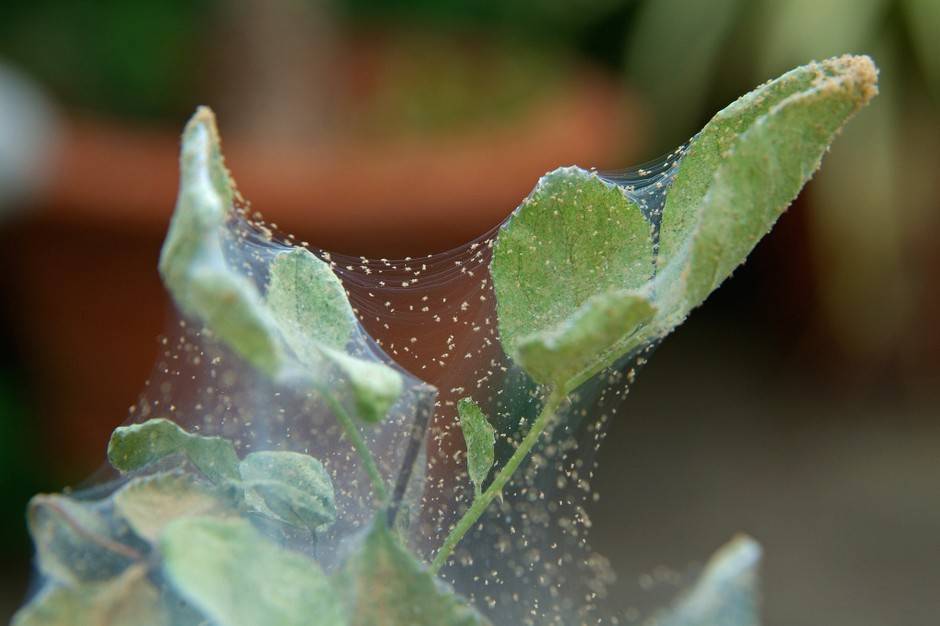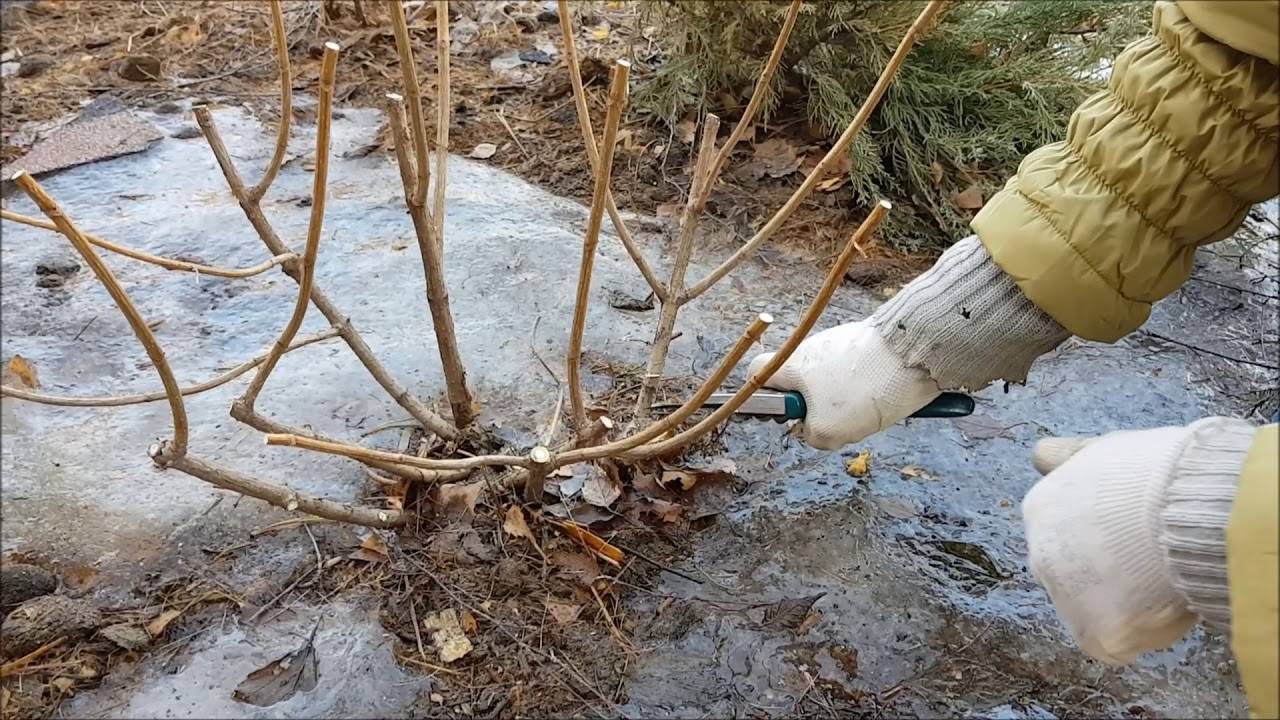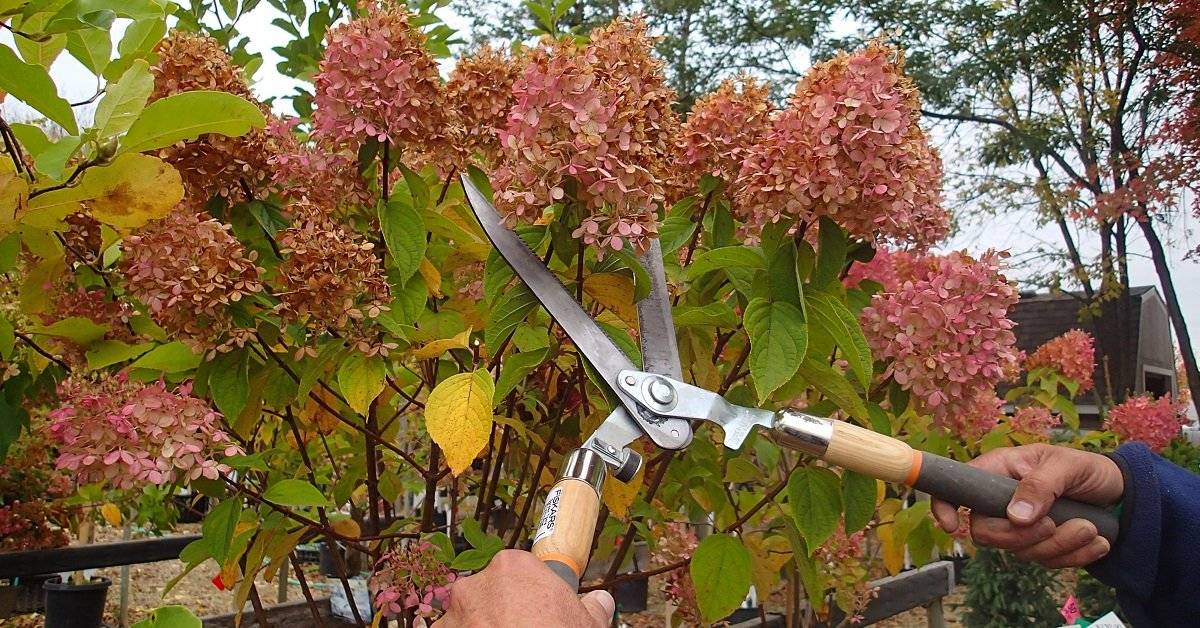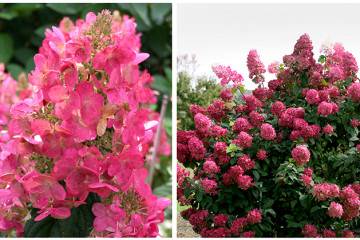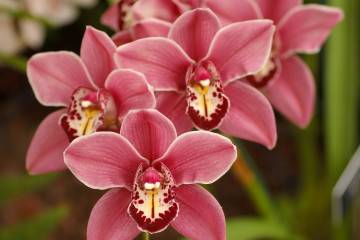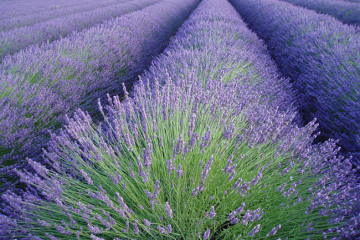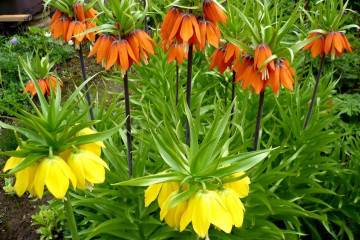When hydrangea blooms - flowering period, how long does it bloom
Content:
- When the hydrangea blooms
- What year does hydrangea bloom
- How to get hydrangeas to bloom in your garden
- Proper feeding of garden hydrangea for flowering
- Prevention of diseases and pests
- When and how to properly trim hydrangea
- Post-flowering care
- What to do if hydrangea does not bloom
- Soil composition
- Illumination of the place
Blooming hydrangea can be a garden decoration. It is often used by landscape designers and flower sellers who sell bridal bouquets. But the plant does not always bloom. Even large bushes sometimes do not bloom for several years. Therefore, it is useful to know when the hydrangea blooms and what to do if the flower stalks are missing.
When the hydrangea blooms
The flowering time of the hydrangea depends on the variety, the timing of planting and care. Some flowers bloom in late May and stop blooming in June-July, others can bloom in October, as long as it is warm.
Flowering period
The duration and duration of flowering depends on the variety. Some plants bloom already in April, but most often flowering occurs in the following months:
- May June. At this time, the Green Racer hydrangea blooms. It is a tall vine with creamy, flat and thyroid flowers.
- End of June - July. This month blooms Invisible Spirit (a tree variety with pink buds), Vanilla Freise, which changes the color of the inflorescences during flowering from white to pink, Kedlllight (a paniculate variety with huge white flowers) and Phantom (has pink and then cream inflorescences). Green Racer blooms on the shoots of last year.
- Aug. Sept. This is the flowering time for varieties like Annabelle, Pepermint, Pinky Winky, Phantom and Kendllight.
- October. The hydrangea varieties Anabel, Pepermint, Phantom and Kendlight continue to bloom. Most of the plants had already bloomed by this time.
Features of hydrangea flowering
Hydrangea is a demanding plant. Its flowering is associated with some features, the knowledge of which helps to achieve the best results in the mass or single cultivation of a flower in the garden. So, the plant:
- It does not bloom every year, if the conditions are not suitable, there may not be any buds or there will be few of them.
- Able to change the shade of panicles during flowering. This can be done artificially by increasing the acidity of the soil, and then the panicles will acquire more saturated bright colors.
- Requires regular pruning. This helps to increase the number of young flowering shoots in the coming year.
The level of acidic substances in the soil changes with the development of the root and ground parts of the plant. To increase acidity, organic and mineral fertilizers are introduced into the soil. The required shade of buds is obtained by spilling the earth with an alkaline or acidic solution.
Required conditions for flowering
Hydrangea pleases not all gardeners with abundant flowering. She is moody and needs this kind of care:
- Regular watering. Water abundantly immediately after transplanting and in extreme heat. If summer and autumn are rainy, then experts recommend watering only when the upper soil layer dries out.
- Pruning. The buds formed this year are needed for future flowering. Cut not at the root, leaving a stem above the surface, up to 30-40 cm high.It is better to do this in the spring, cutting off all dried branches and leaving 10 buds on each viable stem. The inflorescences are cut in the fall.
- Good lighting. The plant does not like direct sunlight, but it also feels bad in the shade. It is better to plant it in a place shaded by other plants or a fence.
Flowering should not be expected if the soil is not fertilized, has dried up since spring due to lack of rain, and the area where the plant is planted is blown by the winds.
Much depends on climatic conditions; in the northern regions, hydrangea is grown in a greenhouse, or only late-flowering and frost-resistant varieties are planted in the ground. It will not work to make other varieties bloom due to cold weather.
What year does hydrangea bloom
Home flowers without transplanting grow in the garden for 20-30 years in a row. Potted indoor crops need to be updated every 5-6 years. Most of all, flower growers are worried about what year the hydrangea begins to bloom, when it needs to be planted in order to get bouquets for sale.
With proper autumn planting, young cuttings acquire a large number of leaves and release flower stalks the next spring. Several months pass from the moment of planting to the flowering of large-leaved varieties.
The exception is paniculate varieties, which can bloom for 3-4 years after planting in open ground. They can be planted in the warm season.
How to get hydrangeas to bloom in your garden
If the hydrangea isn't blooming, you can try:
- transplant it to a new location;
- feed the plant with a suitable fertilizer;
- cut off tree branches overhanging the flower.
The long absence of flowering is sometimes due to the fact that the growing root system of broadleaf hydrangea is intertwined with the roots of other plants. They begin to interfere with each other, develop, drawing out useful minerals and substances. When planting, a distance of 0.8-1 m is maintained between hydrangea bushes and other garden plants.
Proper feeding of garden hydrangea for flowering
An adult plant that does not receive the micronutrients it needs may not bloom every year or discard small, ugly panicles. To achieve lush flowering, the following types of dressings are used:
- nitrogenous fertilizers (applied in spring);
- potassium;
- phosphorus (year-round, in addition to late autumn and winter).
These fertilizers are applied to the soil in doses. The oversaturation of the plant with nitrogen leads to the growth of the green mass, the flowers become smaller, the panicles are reduced by 2 times.
In autumn, the bushes are fed with organic fertilizers. It can be humus or mullein. To obtain panicles of an unusual shade, red peat or aluminum alum is introduced into the soil in spring.
Prevention of diseases and pests
Hydrangea is not often, but it gets sick and suffers from attacks of pests. Gardeners should be wary of such diseases:
- chlorosis - the color of the leaf plate changes, the plant becomes weak, unable to survive in possibly difficult climatic conditions;
- white rot - affects the root system, which leads to the death of the entire bush;
- gray rot;
- septoria;
- powdery mildew;
- rust;
- ring spot - a viral disease that manifests itself in the form of spots on the leaves, is not treated.
Bushes are affected by leaf aphids, spider mites and slugs. To prevent plant death:
- Choose the right landing site - the close location of groundwater can lead to decay of the roots.
- Water regularly - the lack of watering weakens the flowers, they become less resistant to diseases and pests.
- They feed them - in May they must bring nitrogen into the soil, in the summer - phosphorus and potassium, in the fall - only phosphorus.
- The bushes are treated with copper sulfate, dissolving 100 g of it in 10 liters of water.
To combat pests, poisonous agents such as Topaz or Fitosporin are used. In addition, they regularly weed the ground under the bushes, and also examine the plants for pest damage. Dry leaves and branches are removed.
When and how to properly trim hydrangea
If the winters are harsh and the air temperature drops below -10-15 degrees, it is better to cover the bushes with a hut made of wooden trellises and spruce branches. Also, flowers can be dug up and transplanted into a pot, placing it for storage on a balcony or in a warm cellar.
The plant does not like root pruning, which is often practiced by gardeners who do not want to worry about creating a hut as a shelter. A plant cut in this way will quickly grow green mass, but it will not bloom next year.
Several types of pruning are practiced:
- Sanitary. The bushes are examined, damaged branches, ugly or malformed young shoots are removed.
- Anti-aging. Age is important for flowering. Old stems that are more than 3-4 years old are removed. This is usually done if no flowering buds have formed on them this summer.
- With the aim of the appearance of a large number of flowering panicles. Only the frozen ends of the branches or dry stems are removed, at least 4 buds are left on each healthy stem, preferably 10.
Pruning is carried out to thin out dense plantings. Remove weak, unhelpful shoots and shoots growing towards the center of the bush. This can be done in the spring or fall.
Spring pruning allows you to:
- give the bush the desired shape;
- accelerate the development of the plant;
- increase the number of peduncles;
- protect petiole shoots from freezing during spring frosts.
Pruning is permissible in March or the first half of April. If there is still snow on the street, it's not scary, on the contrary, it's good, it hardens the plant. The main thing is that by the time of the procedure, the growth buds begin to bloom, since without them it is difficult to distinguish healthy branches from dry ones.
The gardener needs to know exactly what kind of hydrangea he is growing. For example, tree-like plants are pruned in early March, and paniculate plants in April. Some varieties bloom on new shoots, while others bloom on last year's, and if you cut them off, then there will be no flowering.
Cutting times vary by region. In the south, it is March-April. In the northern regions, it can be pruned in September-November. The optimum temperature is + 9-10 ° C. You cannot cut off a lot: the smaller the volume of the cut stem, the more abundant the flowering.
Post-flowering care
After flowering is complete:
- Remove dried stalks.
- Fertilize the plant. They are fed in order to stimulate the growth of new shoots and protect against the rapid growth of growths, they should not stretch out.
- Hilling bushes. New soil is poured under each, making a slide.
- Mulch the soil. A mixture of compost, manure, peat and humus is poured under each bush, in a layer of 5 cm.
Removing old peduncles is necessary to protect the plant. Panicles swollen from rain and snow become very heavy. The stems cannot support the weight and break.
At the end of October, the hydrangea is sheltered from frost. If the winter is snowy, then some varieties can be left without artificial shelter by building it out of snow. Treelike, ground cover and treelike hydrangeas tolerate cold well.
What to do if hydrangea does not bloom
If the soil is fertilized, the correct pruning of the bush has been made, it is regularly weeded and watered, but there is still no flowering, you can try to do the following:
- Transplant the flower not to a new place, but into a large tub filled with a substrate purchased from the store and suitable for a particular variety of plants;
- Decrease or increase watering.
- Cover the bush from sunlight. Too much light is just as harmful as lack of it.
- To purchase and plant another variety of flowers in the garden, perhaps the climate does not suit the one that grows on the site.
If the question of why the hydrangea does not bloom is still not resolved, they try to completely plant its bushes from other plants. Perhaps the reason is overcrowding.
Soil composition
The soil should be light, nutritious, permeable and acidic.
Peat chips, compost and chopped coniferous needles are poured into the hole before planting the bush. The acidity of the soil is increased with the help of ammonium sulfate, sulfuric acid or ferrous sulfate. They are part of most complex fertilizers.
Drainage is made from a mixture of fine expanded clay and foliage of the earth. Hydrangea grows well on loam, but oily chernozem soils are not suitable for it. Ideal soil composition:
- sod land;
- peat crumb;
- deciduous humus;
- coarse sand;
- black soil mixed with coarse sand.
The main components are taken in equal amounts.
Rules and timing of feeding
The main rule that must be followed when caring for hydrangea. It is better to apply less fertilizer than exceed the allowable rate. They are fed from March to October.
If a gardener grows some exotic variety, then you need to feed it only after consulting with specialists who already had experience in breeding it.
Illumination of the place
The landing site is chosen on a hill or hillock. The flower loves the sun, but direct rays are harmful to it, therefore they are sometimes planted near a fence or a small tree that does not give much shade.
In the spring, the bushes should warm up well, therefore, plants that can prevent this are not grown near them.
Hydrangea is a flowering perennial. Most often it is a shrub, but there are also tree-like varieties. The time when the hydrangea blooms after planting, the duration of flowering depends on the species, climate and care. It is quite possible to grow beautiful collectible varieties on the garden plot. To do this, it is enough to properly feed, water and cut them.

